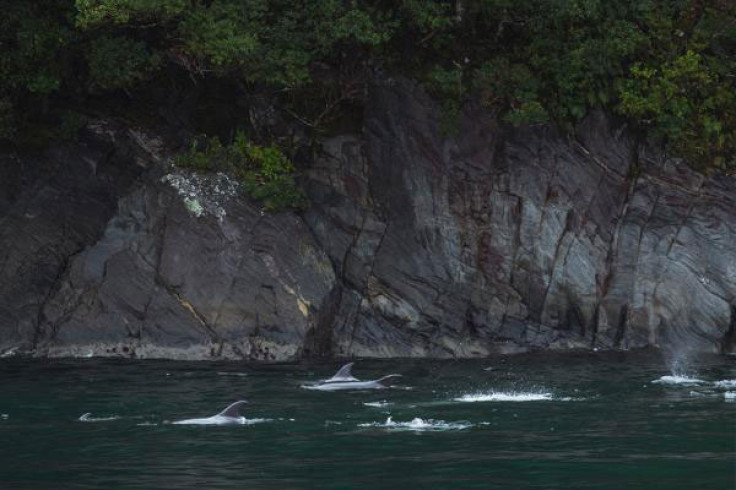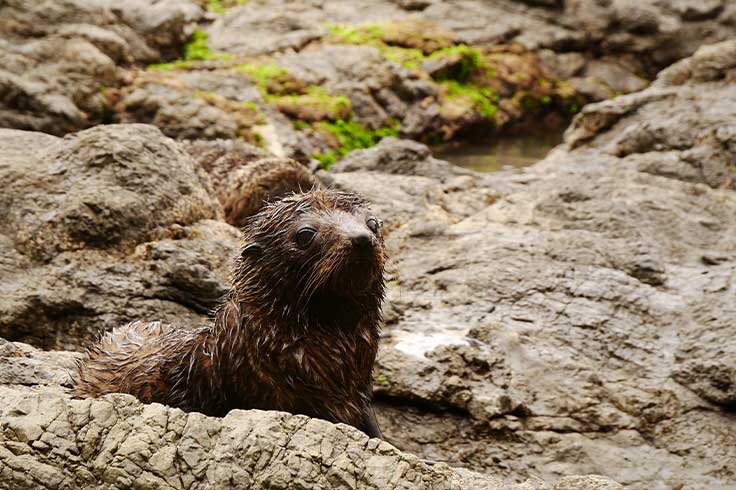6 of the best places to see wildlife in New Zealand
New Zealand is recognised worldwide for its pristine natural beauty, and for its people’s connection to nature. There’s a reason why the country is represented nationally by both a silver fern and a small, brown bird. New Zealanders are even referred to as “Kiwis” across the globe!
In particular, New Zealand is known for its abundance of bird and marine life. Sadly, with time has come threats and pressures to the country’s species, in the form of pests, loss of habitat, over-fishing and hunting.
Thankfully, there are schemes in place to fight the decline, and people working hard to protect New Zealand’s native ecosystem. For the best chance to learn more, and to witness these creatures thriving in their natural habitat, hop in a JUCY and visit these top spots for seeing New Zealand wildlife.
1. PAIHIA, BAY OF ISLANDS
Situated towards the top of the country, about a three to four-hour drive north from Auckland, is the Bay of Islands, renowned for the dolphins that skip and swim through its blue waters. Hop on one of the many cruises that depart from Paihia Wharf to enjoy a memorable few hours with these acrobats of the sea. Depending on the cruise, and as long as the dolphins are in the right mood, you can even pull on your togs to join these playful creatures for a swim. Make sure you’re a confident swimmer though, because the dolphins will put you through your paces!
Most tours provide hot showers and towels for drying off when back on board and, once the swim is over, will take you to explore the beautiful coastline. The famous ‘Hole In The Rock’ (Piercy Island) is a must-see.
Once back on-shore, there’s plenty of other activities to keep you busy, including a visit to the Waitangi Treaty Grounds (the birthplace of our nation), shopping at the Kerikeri markets, kayaking, or even parasailing.

2. TIRITIRI MATANGI ISLAND, HAURAKI GULF
In the Hauraki Gulf, about 30km north east of Auckland, you will find one of New Zealand’s most exciting conservation projects – a wildlife sanctuary on Tiritiri Matangi Island (‘a place tossed by the wind’). Park your JUCY by the marina at the end of the Whangaparaoa Peninsula, and head by ferry to the best spot in the North Island for rare species of birds.
After the first settlers arrived in the mid 1850s, “Tiri” was farmed relentlessly until the 1970s. It was then that the island became the responsibility of the Hauraki Gulf Maritime Park Board who cleared the last stock and began work to restore Tiri to its former glory. They replanted the original forest, creating a sanctuary for endangered birds including the flightless takahe, and the stormy-grey kokako.
Although famed for its birdlife, Tiri is home to a large variety of other creatures including the Raukawa gecko, copper butterfly and even the bottlenose dolphin. Lovers of the natural world will be spoilt for choice. However, be sure to take nothing but photos and leave nothing but footprints behind you.
3. ZEALANDIA, WELLINGTON
Not far from the bustle of our nation’s capital, in the Wellington valley, you’ll find the peaceful tranquillity of Zealandia. This 500-acre ecosanctuary has a unique, 500-year vision to restore the area’s ecosystems to their former, pre-human, state. Since its conception in the early 1990s, this extraordinary project has reintroduced 18 species of native wildlife back into the sanctuary, some of which had been absent from mainland New Zealand for more than 100 years.
Among the species thriving in the sanctuary, is the highly-endangered kaka. Cousin to the kea, which is found in the alpine regions of the South Island, the kaka is brownish-green in colour, with flashes of bright red and orange. The kaka was extinct in Wellington but thanks to a carefully monitored breeding programme, they have become one of Zealandia’s biggest success stories.
As well as 40 different species of bird, Zealandia is home to a large variety of reptiles. The infamous tuatara is the reason why the sanctuary is often referred to as ‘Jurassic Park,’ as it descends from an order of reptiles that lived in the age of the dinosaurs!
4. KAIKOURA, CHRISTCHURCH
Kaikoura, which is just under three hours’ drive from Christchurch, is known for its awe-inspiring marine life. There’s no better spot in New Zealand for whale watching, and there are numerous ways to watch them. You can choose to encounter these mysterious giants by boat or take to the air for a different perspective.
The surrounding ocean is home to a wide variety of species including humpback, blue and orca whales. Most commonly, people visit to witness the sperm whale, as Kaikoura is one of the few places on the planet where this great predator can be seen so close to the shore. The beauty of the mountains against the sky will keep you occupied while you listen and watch for the puff of their breath. If you’re lucky, you’ll witness a sperm whale preparing for one of its long dives. They can stay underwater for up to 90 minutes!
Back on land, you won’t have to travel far to the Ohau Point Seal Colony. This rocky landscape is home to countless wild seals and their pups. There are few opportunities in life to walk so close to these lovable creatures, so remember to respect their space by keeping some distance.

5. ARTHUR’S PASS, CANTERBURY
Found at the heart of the Southern Alps, Arthur’s Pass National Park is a guaranteed spot for sighting Kea. Visitors to the Selwyn district will be delighted by the cheeky personality of this native parrot, who is known for its friendliness and confidence around humans. Its bright green plumage is enhanced by a flash of orange under wing. But be careful! Given half the chance, a Kea will steal your food and rip the windscreen wipers from your car.
In between enjoying the naughty antics of this characterful bird, Arthur’s Pass will give you plenty to look at. The park is home to scenic views of shingle-filled riverbeds, acres of beech forest, rock shelters and waterfalls. For the truly adventurous, there are countless opportunities for a hike, and even the opportunity to ski the Temple Basin in winter.

6. OTAGO PENINSULA, DUNEDIN
As off-putting as the name might be, Sandfly Bay Track is a must-visit within the Otago Peninsula region. Rather than the nips of small, black flies, visitors will experience the joys of the local colony of yellow-eyed penguins or “hoiho.” If you spot one, don’t linger – these rare and timid creatures will not come ashore if they feel threatened. Luckily there are sand dunes aplenty to hide behind and watch from. There are even bunkers that have been specially created for spying on the hoiho from a safe distance.
Elsewhere, the Otago Peninsula is also home to another penguin species, the little blue penguin or “korora” – the smallest in the world.
Ready to respond to the call of the wild on a road trip around New Zealand?
GRAB YOUR BINOCULARS AND book your JUCY car or campervan hire by calling us on 0800 399 736 or clicking book NOW! Do the wild thing; you know you want to!